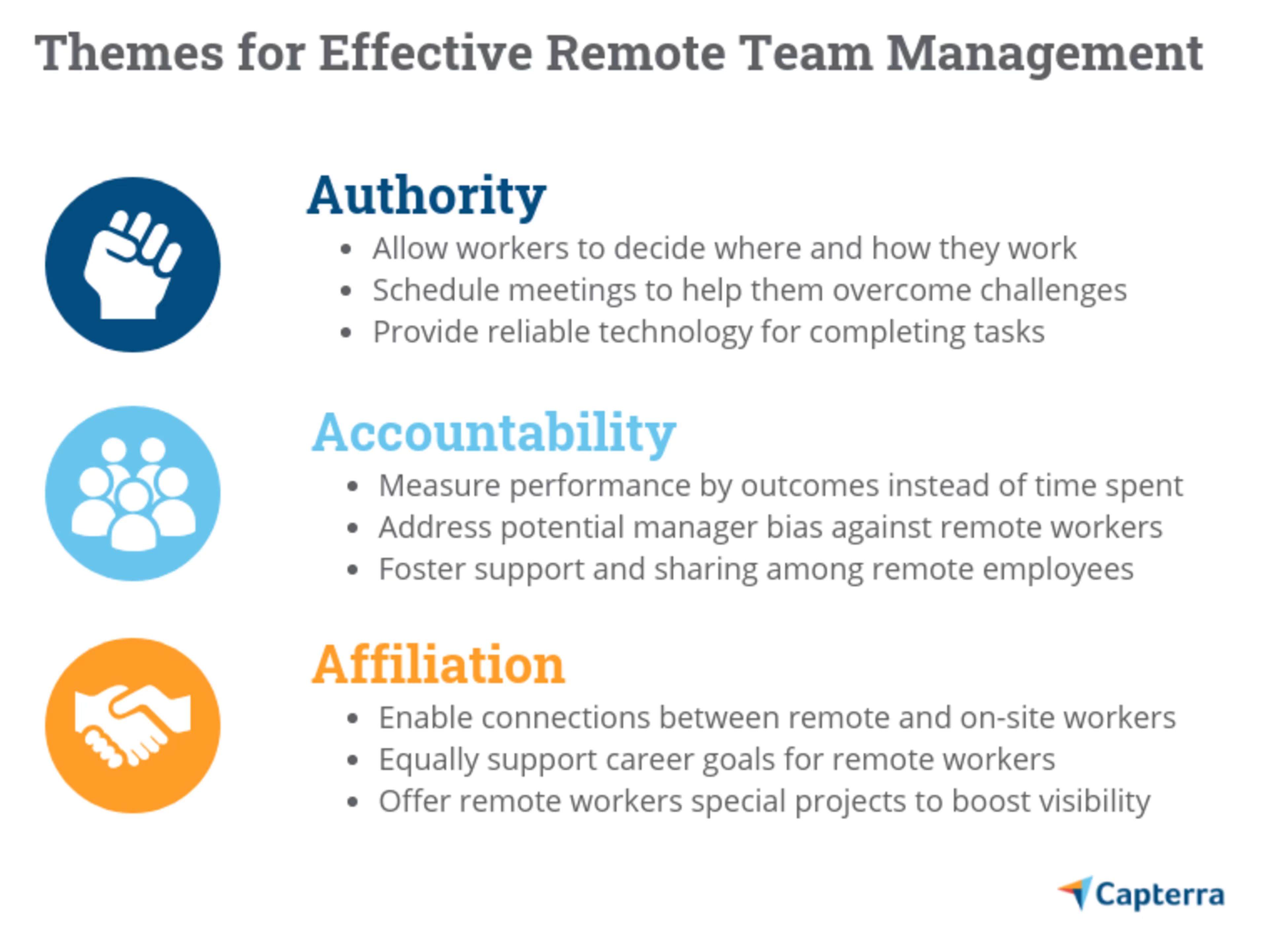A plan for new technology and a new perspective on remote work leads to trust and productivity

With remote work policies on the rise, companies are saving on real estate costs while also getting significant boosts to morale and productivity.
But what seems like a win-win situation too often fails after simply handing out laptops and sending folks home. A thriving remote team requires more upfront planning.
This planning includes understanding what work can be done remotely, establishing trust with team members, equipping them with the right collaboration tools, and judging their actual work instead of their timecard.
Whether you’re forming a new remote team or struggling to manage one, these three steps help you get all the benefits of a highly productive team wherever they may be working.
3 steps for managing remote teams
1. Empower remote workers with the right technology
When you determine what work your company does that is possible with remote teams, you’ll know the kind of infrastructure and tools the workers need. A minimum level of resources must be provided to get the productivity companies need, but also to facilitate effective management.
Gartner recommends reviewing the following employer technology and home office considerations to understand if you’re set up for effective remote team management (full report available to Gartner clients).
Employer-provided technology | Do we provide employees with laptops? Do we need to provide a VPN for remote access? |
|---|---|
Are we able to provide technology for video conferencing? How can we compensate for slower connections? | |
What applications enable effective interactions with remote workers? | |
Is our current support strategy able to adequately support remote workers? | |
Do we make it simple for remote workers to book rooms or rent equipment when they do need to come into the office? |
These tools don’t just help remote workers do their jobs, they give managers multiple touchpoints for communication and indicators of performance without the need for in-person conversations.
2. Establish authority, accountability, and affiliation
Remote workers also need managers to set three important precedents for their work styles and relationships. In a less tangible way, themes of authority, accountability, and affiliation help both the employee to work productively and the manager to judge their performance appropriately.

3. Assess remote worker performance fairly
The final step to improve remote worker management is changing the way you measure their performance. Gartner sees changes in how companies are judging their employees, alongside the growth of remote work.
“By 2022, over 30% of organizations will abandon one-size-fits-all performance management approaches in favor of tailoring to support the distinct objectives of various business functions.”
Melanie Lougee and Helen Poitevin, Gartner VP Analysts (full report available to Gartner clients)
The traditional methods for measuring employee performance aren’t working well for employees in the office, and they're certainly not working for remote workers. As we touched on above, part of being accountable for remote employees means managers must judge their work appropriately.
That requires the manager to deliver clear objectives and to define exactly what great results look like. This sets up easy-to-understand milestones the remote worker can achieve and the manager can recognize without physically being in the same place.
Need a simple way to start? Since you can’t see them working all day, avoid judging performance on hours they work. Instead, establish assignments with deadlines and clear results.
Get the most out of your remote team
Managing remote teams effectively requires a two-pronged approach with technology that enables their work outside the office and recognition of the distinct style of work that remote workers perform.
If your company doesn’t provide VPN, videoconferencing, collaboration tools, technical support, or resource scheduling, review Capterra’s top products to see which technologies make sense for your business.
Once the technology is in place, remember to focus on fostering a relationship of trust, accountability, and fairness to experience every benefit of remote teams.